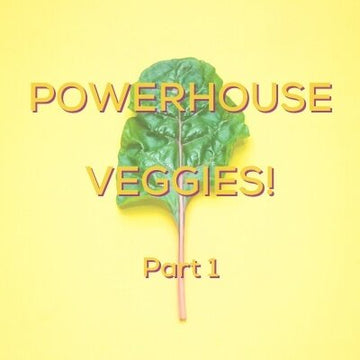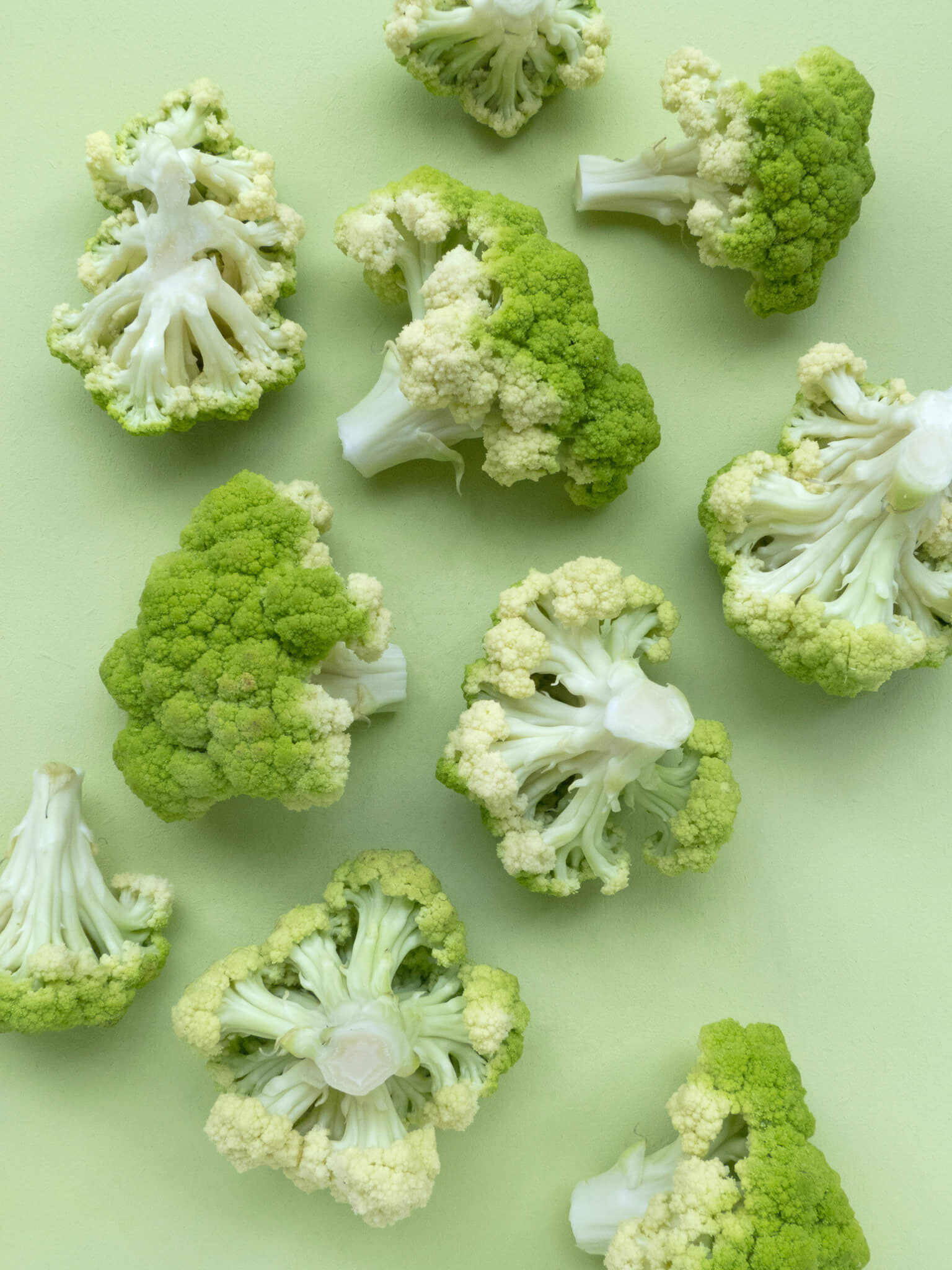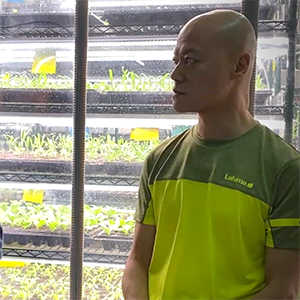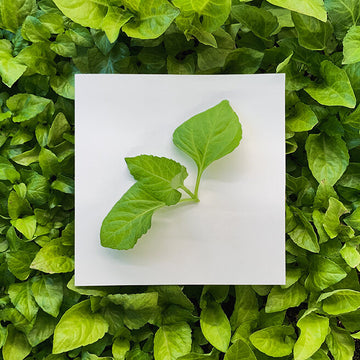
What is a Powerhouse Vegetable?
People throw around claims about the nutritional benefits of fruits and vegetables so casually that it's hard to know what to believe. It seems like almost every plant out there can cure chronic illness, or boost your immunity, or give you a mental and physical edge. But how are these values quantified?
There are so many factors that influence the nutrition of a plant - from the climactic conditions it was grown in, to the way it's stored, or the way it's prepared and consumed. Additionally, the way that a single plant's nutritional composition interacts with the other components of your diet adds another layer of complexity to figuring out what you should be putting on your plate (i.e., oxalic acid and calcium absorption in dark leafy greens). It's so easy to give up on the research and eat whatever tastes good. But what if there was a handy, research-based reference list that ranks the nutritional concentration of a fruit or vegetable? Lucky for you - there is.
A peer-reviewed study published in the Center for Disease Control's journal, Preventing Chronic Disease, classifies powerhouse fruits and vegetables as "foods providing, on average, 10% or more daily value per 100 kcal of 17 qualifying nutrients." Basically, these are the plants that will give you the most potent nutrition boost per calorie. The authors of the study set out to create this guideline to define foods most strongly associated with reducing the risk of chronic disease. They wanted to help consumers focus on eating food that meets daily energy needs in a nutrient-dense way.
In the image below, you can find the varieties we grow at Common Farms that made the list, in order of rank. The percentage indicates the nutrient density in its raw, uncooked state.
Common Farms Top 12
#1 Watercress (100%)
#2 Bok Choy - listed as Chinese Cabbage (91.99%)
#3 Chard (89.27%)
#4 Beet (87.08%)
#12 Mustard (61.39%)
#14 Chive (54.79%)
#15 Kale (49.07%)
#16 Dandelion (46.34%)
#18 Arugula (37.65%)
#19 Broccoli (34.89%)
#26 Carrot (22.6%)
#31 Radish (16.92%)
*number ranking on powerhouse vegetable list (#)
*percentage indicates nutritional density (%)
How are Powerhouse Vegetables determined?
- You're encouraged to read the full study and methodology on the CDC's website for yourself, but here's a basic rundown:
- A list of commonly consumed green leafy, yellow/orange, citrus, and cruciferous items was generated.
- 17 key nutrients were identified according to public health importance (UN guidelines)
- A nutrient density score was calculated for each food in its raw form, taking into account each nutrient's bioavailability. The score represents the mean of percent DVs per 100 kcal of food.
*In other words, the higher the score, the more nutrient-dense it was across all 17 key nutrients. See the full ranking at the bottom of this page.

17 Key Nutrients
The 17 nutrients of public health importance according to the Food and Agriculture Organization of the United Nations and Institute of Medicine.
(potassium, fiber, protein, calcium, iron, thiamin, riboflavin, niacin, folate, zinc, and vitamins A, B6, B12, C, D, E, and K)
Over the next few weeks, we're going to highlight 12 highly nutritious greens we grow at Common Farms that are classified as powerhouse vegetables according to this study.
Here at Common Farms, nutrient density is at the forefront of how we select the produce to grow. When we first started planning our urban farm in 2016, we narrowly focused on leafy greens like lettuce. This is often the starting point for anyone that becomes interested in indoor farming, as it's a crop that is both easy to grow and widely consumed.
However, when we took a deeper look at why we, as co-founders, were motivated to begin our journey into agriculture, we realized that lettuce didn't fit into our objectives. One of our co-founders, Jessica, was inspired to reduce the high amount of food waste she saw created by imported specialty products in her days of restaurant entrepreneurship. Lettuce was already readily available from local, urban farms. Another of our co-founders, Preston, had studied food security issues in the Middle East and was inspired by the potential for urban farms to deliver optimal nutrition within dense, urban communities. Lettuce is a nutrient-rich crop in itself, but we wanted to grow a wider variety of products that could supplement an entire, balanced diet.
So, we began to research microgreens, or micro cress, and were immediately struck by its potential. For one, no other farms in Hong Kong were growing them at the time, and they were a product commonly ordered by chefs at higher-end restaurants all over the city. Everyone was ordering them from as far abroad as the Netherlands or North America, leading to a huge carbon footprint for such small produce, and a large amount of spoilage due to their delicate nature. Secondly, microgreens pack a huge nutritional punch, potentially offering between 4-40% more nutrition by weight than the vegetables in their adult forms. For example, in the case of broccoli microgreens, one would need to eat ca. 42% less mass of microgreens (ca. 53 gfw) to obtain the same amount of minerals present in a serving of raw broccoli florets. We could also grow far more produce within any given space due to designing the farm in a space-saving, vertical shelf configuration, maximizing our output in a city that does not have much available farmland. For us, it was the perfect first crop, and from there, we've continued to experiment and expand to other products such as edible flowers and unconventional herbs, which have interesting nutritional benefits themselves that we’ll discuss in future posts.
We grow in a clean, climate-controlled environment in the heart of Hong Kong. We never use pesticides or chemical fertilizers. Instead, we grow with organic soil and fertilizer supplied by our closed-loop aquaponic system. Since we're located within a few kilometer radii of every single one of our restaurant and home customers, we can also ensure that our greens' valuable nutrition does not deteriorate while sitting for days on a grocery store shelf. Supplying our community with the most nutritious produce possible is our guiding principle.

Key Takeaways
Top of the list: Items in cruciferous (watercress, Chinese cabbage, collard green, kale, arugula) and green leafy (chard, beet green, spinach, chicory, leaf lettuce) groups were concentrated in the top half of the distribution of scores.
Bottom of the list: Items belonging to yellow/orange (carrot, tomato, winter squash, sweet potato), allium (scallion, leek), citrus (lemon, orange, lime, grapefruit), and berry (strawberry, blackberry) groups were concentrated in the bottom half.
Items that were studied but didn't make the criteria of nutrient-dense were raspberry, tangerine, cranberry, garlic, onion, blueberry, apples, bananas, corn, and potatoes. This isn't to say they're unhealthy, just that they don't have as much concentrated nutrition across the 17 critical nutrients as the others on the list.
References
Find the full list of powerhouse fruits and vegetables below, as well as the bioavailability of nutrients used to weigh the nutrient density scores. You can read the full study here.
Use this list as a reference for meeting your dietary needs, but don't eat these exclusively. A reminder that the nutritional density of these chosen nutrients is not the only reason to consume vegetables. Dietary fiber, for instance, is an important factor not taken into consideration. The study also didn't include less commonly found fruits or vegetables that are more regional in consumption.
A wide variety of nutritional sources is always the best practice!






